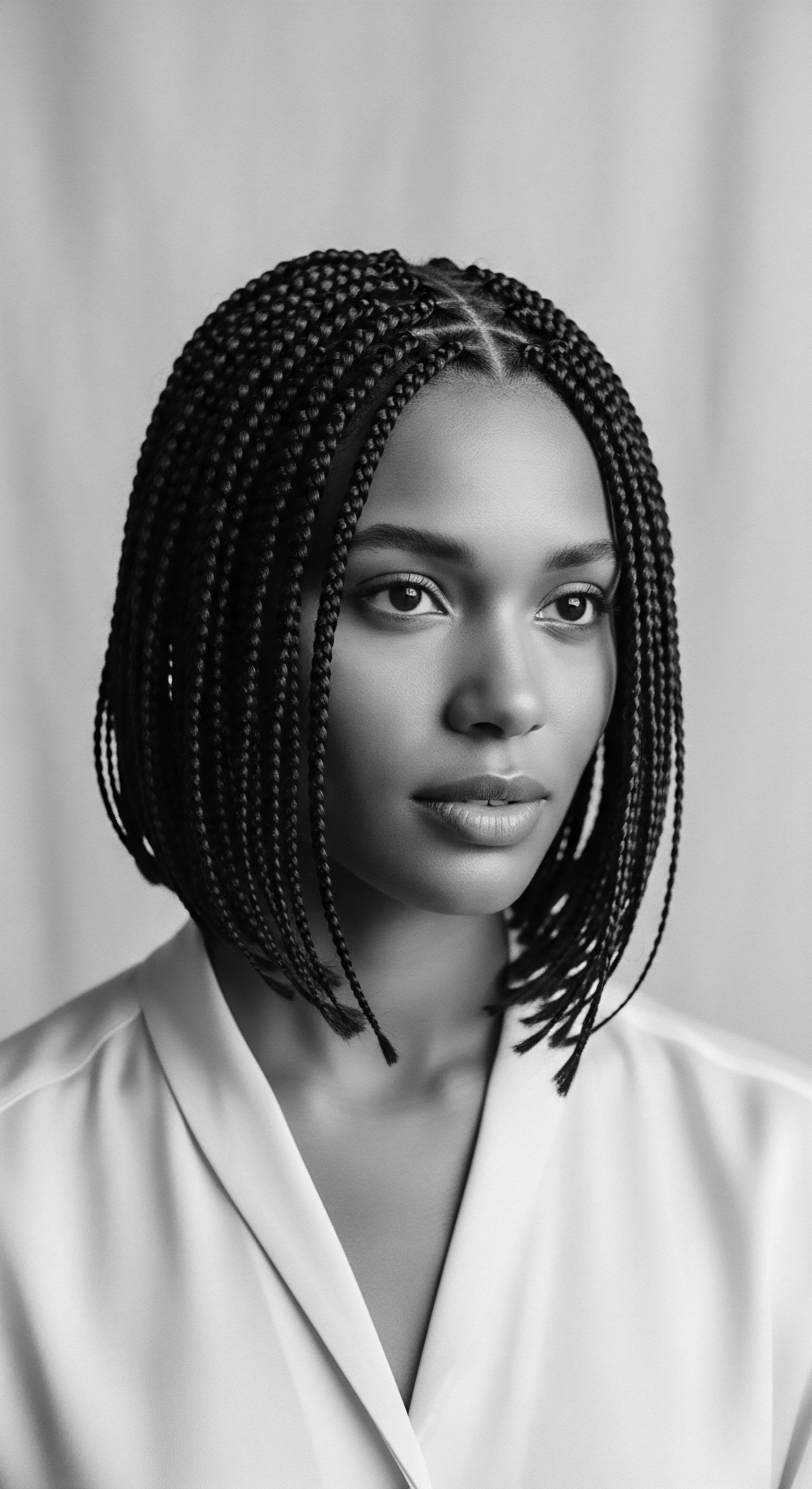
Fundamentals
Personal empowerment, at its very core, signifies the unfolding of an individual’s inherent capacity to guide their own existence. It entails the conscious act of claiming agency, articulating one’s authentic voice, and making choices that resonate with an inner knowing, rather than external pressures. This intrinsic drive manifests as a deepening sense of self-worth and a fortified resolve to shape one’s circumstances.
For those connected to textured hair heritage, this concept finds a particular resonance, entwined with ancestral practices and the profound historical meanings embedded within strands of kinky, coiled, or curly hair. The significance of personal empowerment, in this context, reaches beyond individual preference; it speaks to a collective legacy of resilience and self-determination.
Across the vast and varied landscapes of African and diasporic communities, hair has never existed as a mere adornment. It served as a spiritual conduit, a social marker, and a canvas for identity. The intentional care and styling of hair, whether through ancient braiding rituals or the application of botanical elixirs, represented an exercise in personal empowerment, even before the term gained its modern scholarly definition.
The act of tending to one’s hair, passed down through generations, became a vital affirmation of selfhood and belonging. This heritage of care, deeply rooted in communal wisdom and individual expression, provides a foundational understanding of how personal empowerment has always been an inherent part of textured hair traditions.

The Elemental Biology and Echoes from the Source
When we look at the elemental biology of textured hair, we discover a story of strength and uniqueness. The helical structure of coils, the very architecture of the hair shaft, grants it an extraordinary ability to resist breakage and hold intricate styles. This biological reality was, and remains, a source of aesthetic wonder and practical utility within ancestral societies.
Understanding the unique needs of textured hair, from its natural inclination to dryness to its tendency to shrink, informed the development of sophisticated care practices. These practices, originating from a deep observation of nature and the hair itself, represent an early form of scientific inquiry, allowing individuals to work harmoniously with their hair’s natural qualities.
Ancient African practices reveal an intimate understanding of hair as a living entity, deserving of respect and thoughtful attention. The preparation of nourishing oils from indigenous plants, the crafting of combs from natural materials, and the development of communal hair-dressing ceremonies all speak to a culture that honored the physical self as a reflection of the spiritual and social body. This deep reverence for hair provided a tangible pathway for personal empowerment.
Individuals learned to care for their crowns, not as a superficial act, but as a connection to their lineage, their community, and the spiritual world. This rich tapestry of inherited wisdom forms a living archive of self-care and self-respect, reinforcing the idea that empowerment begins with honoring one’s inherent nature.
Personal empowerment, in its simplest interpretation, involves an individual’s assertion of agency and self-worth, particularly through the culturally laden practices surrounding textured hair.
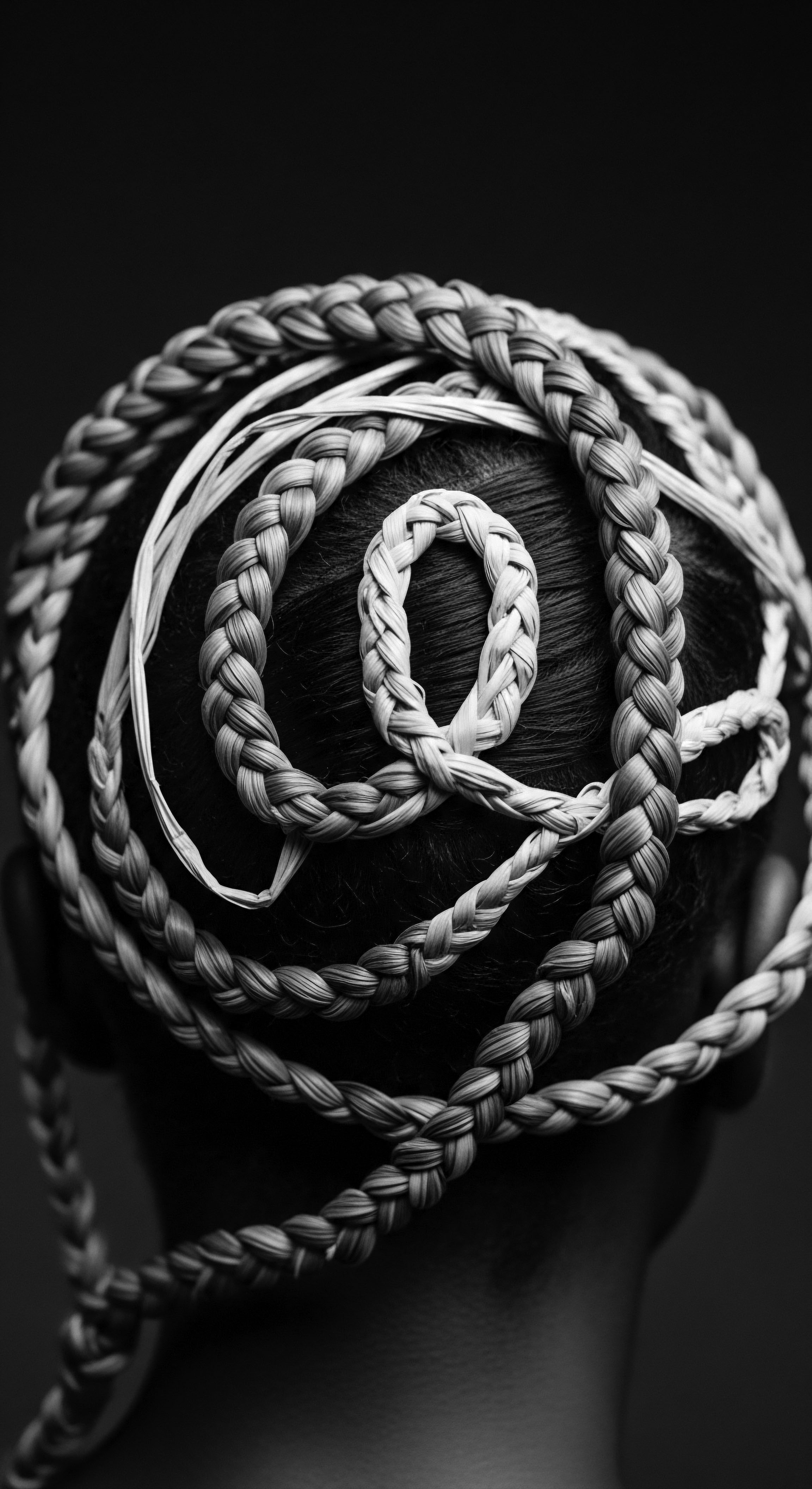
An Overview of Ancestral Practices and Their Significance
Many ancestral practices focused on hair care also served as communal rites, deepening social bonds and transmitting cultural values. Imagine the rhythmic quiet of a village gathering, where elders meticulously cared for the younger generation’s hair, sharing stories and imparting life lessons with each gentle stroke and skillful plait. These moments were not merely about grooming; they were profound acts of cultural continuity, fostering a collective sense of identity and individual strength.
The knowledge exchanged in these spaces—about herbs for growth, techniques for styling, or the meaning of specific adornments—reinforced a sense of capability and belonging. The significance of such intergenerational transmission is clear ❉ it cultivated an environment where personal empowerment blossomed through shared heritage and mutual support.
Historically, specific hairstyles communicated a wealth of information about an individual’s status, age, or tribal affiliation. A particular braid pattern might signify a woman’s marital status, her readiness for initiation rites, or even her family’s social standing. This visual language of hair allowed for self-expression and cultural affirmation, even in the absence of spoken words.
The ability to articulate one’s identity through these symbolic hairstyles was a powerful manifestation of personal empowerment, demonstrating control over one’s self-presentation and connection to a broader cultural narrative. This rich heritage reminds us that self-determination can be beautifully expressed through tangible, culturally specific actions.
- Palm Oil ❉ Often used for its moisturizing properties, signifying health and communal well-being in West African traditions.
- Shea Butter ❉ A prized emollient from the karité tree, employed for protection and nourishment, reflecting reverence for natural resources.
- Combs ❉ Carved from wood or bone, these tools were often imbued with symbolic meaning, extending beyond mere utility to represent ancestral connections.

Intermediate
Moving beyond foundational understandings, personal empowerment, particularly within the textured hair experience, embodies a dynamic interplay between internal self-perception and external societal pressures. It becomes an act of reclaiming narrative, asserting autonomy in the face of imposed standards, and cultivating a sense of wellbeing that aligns with one’s authentic heritage. This deeper exploration reveals how the journey toward empowerment is often a continuous process of discernment, of honoring ancestral wisdom while adapting to modern contexts. The living traditions of hair care, often passed through generations, stand as a testament to this ongoing process, a tender thread connecting past practices with present expressions of identity.

The Tender Thread ❉ Living Traditions of Care and Community
Hair care in Black and mixed-race communities transcends simple beauty routines; it represents a sacred ritual, a communal gathering, and a quiet act of defiance against a world that frequently devalues natural hair forms. The “kitchen beautician,” the neighborhood braider, the communal salon – these spaces have historically been, and remain, vital centers for connection, conversation, and collective self-care. In these settings, knowledge about hair types, product efficacy, and styling techniques is exchanged, but also stories, laughter, and solidarity.
These shared experiences foster a sense of belonging, reinforcing individual self-worth through the affirmation of community. The meticulous practice of oiling scalps, detangling coils, or creating intricate patterns speaks volumes about self-respect and the care extended to others, a quiet, yet powerful, manifestation of personal empowerment.
Hair care rituals, particularly in Black and mixed-race communities, serve as powerful spaces for communal connection, knowledge exchange, and the affirmation of cultural identity.
Ancestral wisdom, often dismissed by dominant beauty industries, offers profound insights into holistic hair wellness. For centuries, practitioners understood that hair health was intrinsically linked to overall physical and spiritual wellbeing. Ingredients like various plant oils, clays, and herbal infusions were not chosen at random; they were selected for specific therapeutic properties, often with an understanding that precedes modern scientific validation.
This connection to natural elements and traditional remedies cultivates a respectful relationship with the body and the earth, deepening one’s sense of self-agency. The choice to utilize these time-honored methods over more conventional, sometimes harsh, alternatives represents a deliberate act of personal empowerment, aligning one’s practices with a deeper, inherited truth.
Consider the profound historical example of how enslaved African women, facing unimaginable oppression, transformed their hair into a clandestine tool of survival and liberation. During the transatlantic slave trade and the era of chattel slavery in the Americas, their hair became a medium for resistance, symbolizing not only identity but also a fierce determination to achieve freedom. In communities across the diaspora, including those in what is now Colombia and Suriname, oral histories recount how women painstakingly braided rice seeds into their hair before forced voyages, ensuring a future food source and a link to their ancestral agricultural practices in a foreign land. These seemingly simple acts of securing sustenance within their strands were incredible feats of foresight and resilience.
Furthermore, and perhaps even more remarkably, intricate braided patterns served as coded maps for escape routes. A specific arrangement of cornrows, for instance, known as “departes” in Afro-Colombian traditions, could signal a plan for leaving, while other patterns might indicate the presence of rivers, mountains, or even military patrols along a path to freedom. The inclusion of pebbles or shells within the braids could denote landmarks or hidden caches of supplies. This ingenious use of hair, a feature often subjected to attempts at dehumanization, became an undeniable testament to personal empowerment through shared ingenuity and a collective will to defy bondage.
These acts, often carried out in secret communal settings, reinforced a profound sense of self-possession and collective determination, showcasing the undeniable power of embodied knowledge and covert communication during periods of extreme duress. This historical reality illustrates a profound layer to the definition of personal empowerment ❉ it is not simply about what one does for oneself, but what one creates and preserves as a means of survival and resistance for the collective, transforming hair into a living, strategic archive of hope and liberation.
| Aspect Intent |
| Ancestral Practices (Echoes from the Source) Spiritual connection, community bonding, health, identity markers. |
| Contemporary Relevance (The Tender Thread) Self-acceptance, cultural pride, holistic wellness, political statement. |
| Aspect Ingredients |
| Ancestral Practices (Echoes from the Source) Local botanicals, natural oils (e.g. shea, palm, castor), clays. |
| Contemporary Relevance (The Tender Thread) Ethically sourced natural ingredients, scientifically validated formulations. |
| Aspect Ritual |
| Ancestral Practices (Echoes from the Source) Communal grooming sessions, storytelling, intergenerational teaching. |
| Contemporary Relevance (The Tender Thread) Personalized routines, salon experiences, online community support. |
| Aspect Empowerment Manifestation |
| Ancestral Practices (Echoes from the Source) Cultural preservation, covert communication (e.g. escape maps in braids), self-sufficiency. |
| Contemporary Relevance (The Tender Thread) Rejecting Eurocentric norms, advocating for hair discrimination laws, celebrating natural texture. |
| Aspect Outcome for Hair |
| Ancestral Practices (Echoes from the Source) Nourishment, protection, strength, adornment aligned with cultural codes. |
| Contemporary Relevance (The Tender Thread) Defined curls, reduced breakage, improved scalp health, versatile styling options. |
| Aspect Both historical and present approaches underscore the deep heritage of care and resilience inherent in textured hair traditions. |

From Resilience to Revival ❉ The Natural Hair Movement
The contemporary natural hair movement stands as a vibrant resurgence of this historical legacy, a powerful manifestation of personal empowerment on a global scale. In recent decades, countless individuals of African and mixed heritage have consciously chosen to embrace their natural hair textures, often after years of chemically straightening or altering their strands to conform to Eurocentric beauty ideals. This collective shift signifies a profound act of self-reclamation, a public declaration of self-acceptance, and a powerful assertion of cultural identity.
The movement is underpinned by a growing recognition of the historical oppression and discrimination faced by those with textured hair, challenging pervasive stereotypes and advocating for policy changes, such as the CROWN Act, that protect individuals from hair-based bias. This re-alignment with ancestral hair forms is more than a trend; it is a profound social and cultural phenomenon, reflecting a deep-seated desire for authenticity and freedom of expression.
The rise of online communities, digital platforms, and specialized product lines has provided unprecedented access to information and support for individuals on their natural hair journeys. This newfound accessibility facilitates a collective learning process, debunking myths about textured hair, sharing effective care strategies, and celebrating the vast diversity of coils, kinks, and waves. Within these digital spaces, individuals find affirmation, share experiences of both struggle and triumph, and discover a sense of belonging that transcends geographical boundaries. This communal exchange of knowledge and encouragement reinforces the notion that personal empowerment is not an isolated endeavor; it is often nurtured and strengthened within a supportive collective, echoing the communal hair rituals of centuries past.
- De-Colonizing Beauty ❉ Rejecting imposed standards of beauty and re-centering African aesthetics as valid and beautiful.
- Economic Agency ❉ Supporting Black-owned businesses and entrepreneurs who create products specifically for textured hair.
- Self-Acceptance ❉ Cultivating an inner landscape of appreciation for one’s natural form, understanding its unique characteristics.
- Advocacy ❉ Working towards legal protections against hair discrimination in schools and workplaces, as seen with initiatives like the CROWN Act.
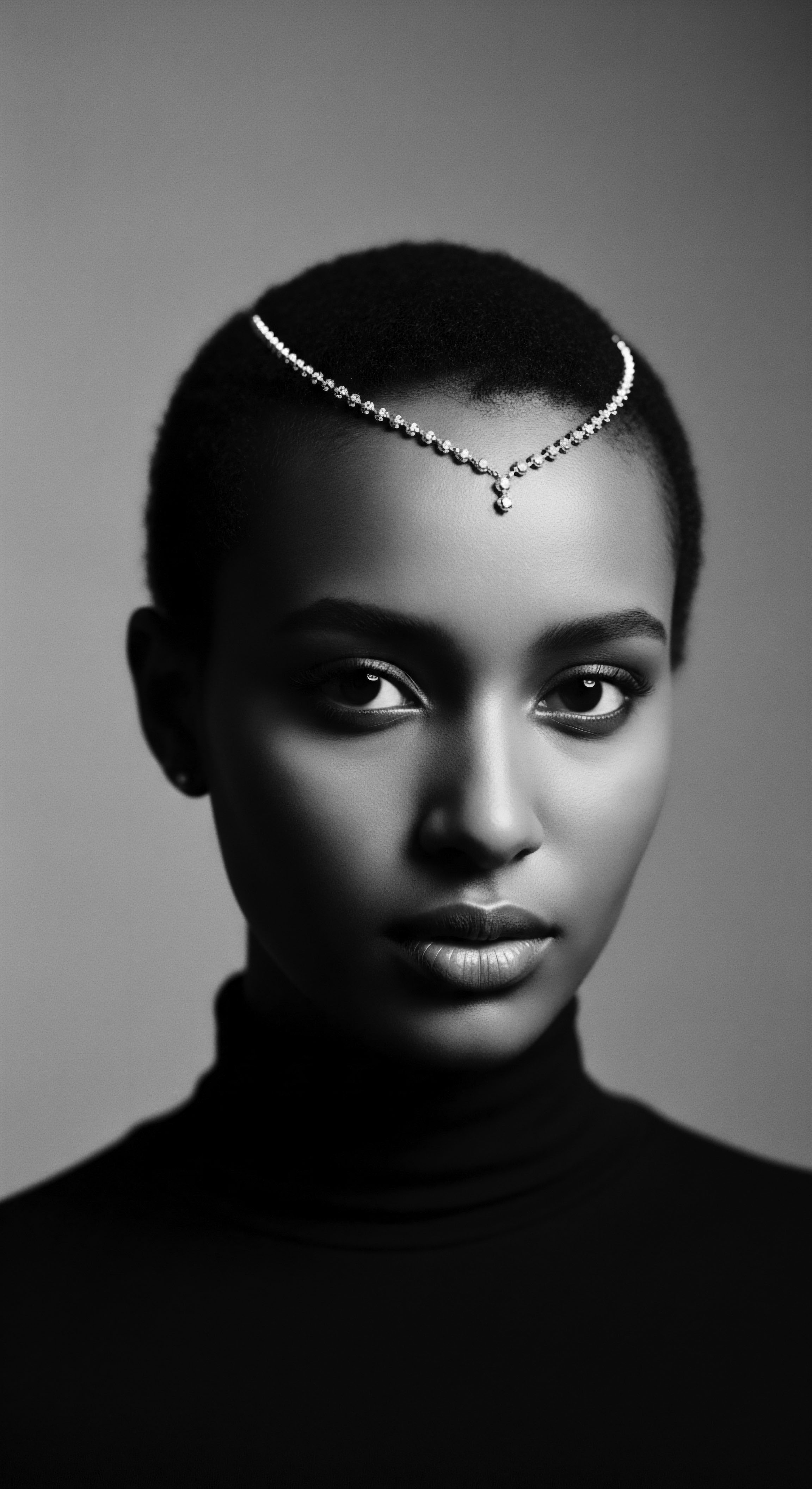
Academic
From an academic perspective, personal empowerment transcends a mere feeling of capability; it represents a complex psycho-social construct rooted in an individual’s perceived control over their life’s circumstances, often in direct opposition to systemic barriers. It involves the development of self-efficacy, the ability to make autonomous decisions, and the capacity to influence one’s environment meaningfully. For textured hair communities, this conceptualization gains considerable depth when analyzed through the lenses of cultural studies, anthropology, and psychology.
It involves understanding personal empowerment as a historical process of reclaiming agency, challenging oppressive narratives, and affirming an identity inextricably linked to inherited aesthetics and practices. The meaning of personal empowerment within this realm is not static; it is a dynamic process shaped by collective memory, ongoing resistance, and the continuous reinterpretation of ancestral wisdom in contemporary contexts.
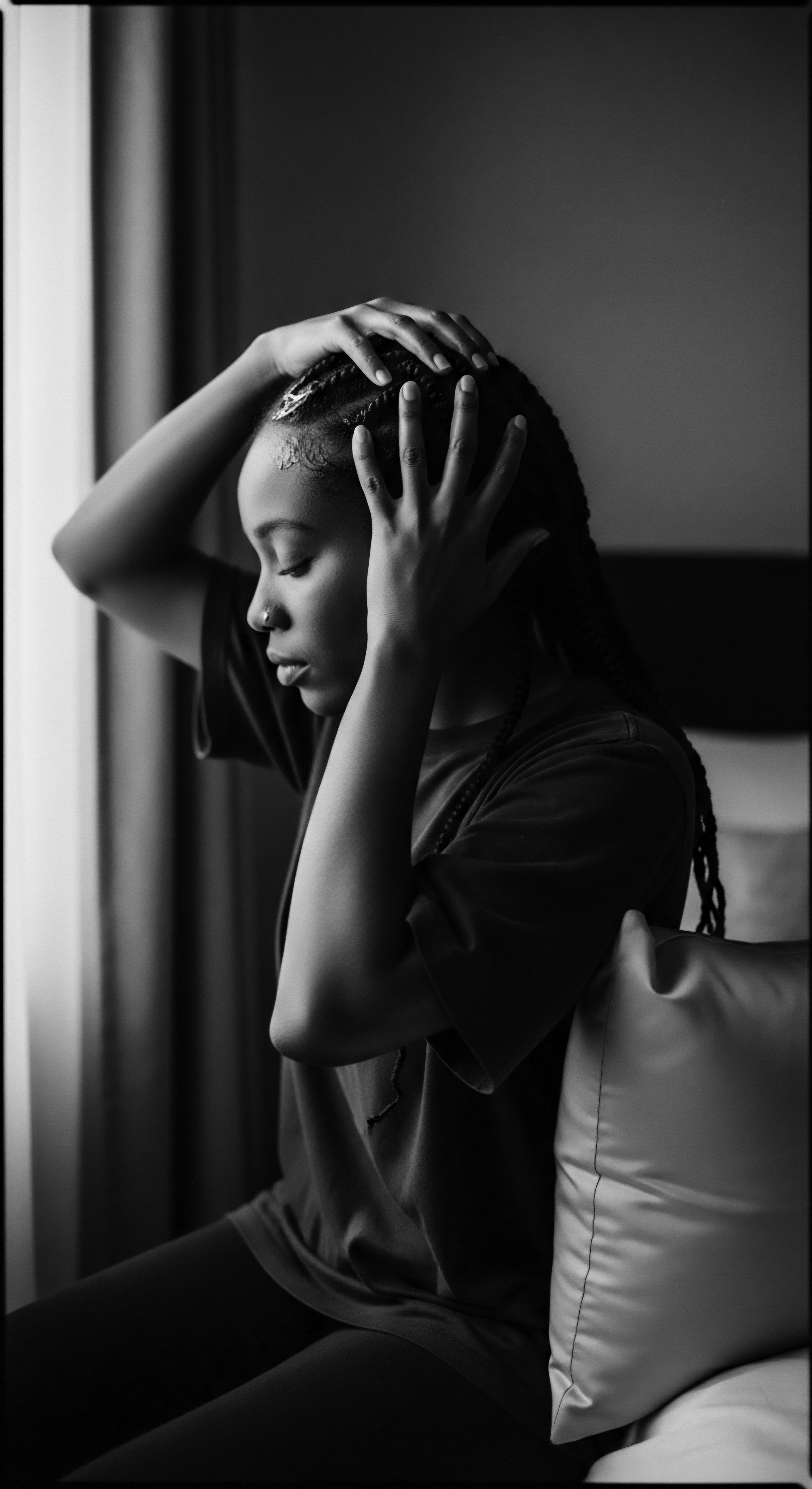
Meaning and Delineation of Personal Empowerment in Cultural Context
The academic delineation of personal empowerment within the context of Black and mixed-race hair experiences positions hair as a significant site of both struggle and liberation. Scholars argue that the forced imposition of Eurocentric beauty standards during colonialism and slavery served as a deliberate mechanism of dehumanization and control, aiming to strip individuals of their cultural identity and intrinsic worth. Consequently, the act of maintaining, styling, and celebrating textured hair became a potent form of quiet, often covert, resistance.
This resistance exemplifies personal empowerment as a proactive defiance of dominant norms, a reclamation of selfhood against forces attempting to negate it. It is an assertion of self that resonates with the definition of personal power as the ability to define one’s own reality and to act upon it.
Sociological studies indicate that the decision to wear natural hair can correlate with increased self-esteem and a deeper connection to one’s ethnic identity. This illustrates how personal empowerment, in this specific domain, fosters psychological wellbeing. The shift away from chemically altering hair, which often carried a physical and financial burden, allows individuals to allocate resources—both personal and economic—towards practices that genuinely align with their heritage and health.
This conscious redirection of energy and investment highlights a practical application of personal empowerment ❉ making choices that serve one’s authentic self, rather than succumbing to external pressures for conformity. The substance of this empowerment lies in the active reconstruction of self-perception, moving from externally imposed definitions of beauty to an internally validated sense of aesthetic and cultural pride.
Scholarly interpretations of personal empowerment, particularly for textured hair communities, view hair as a central space for the contestation and reclamation of identity against historical and systemic oppression.
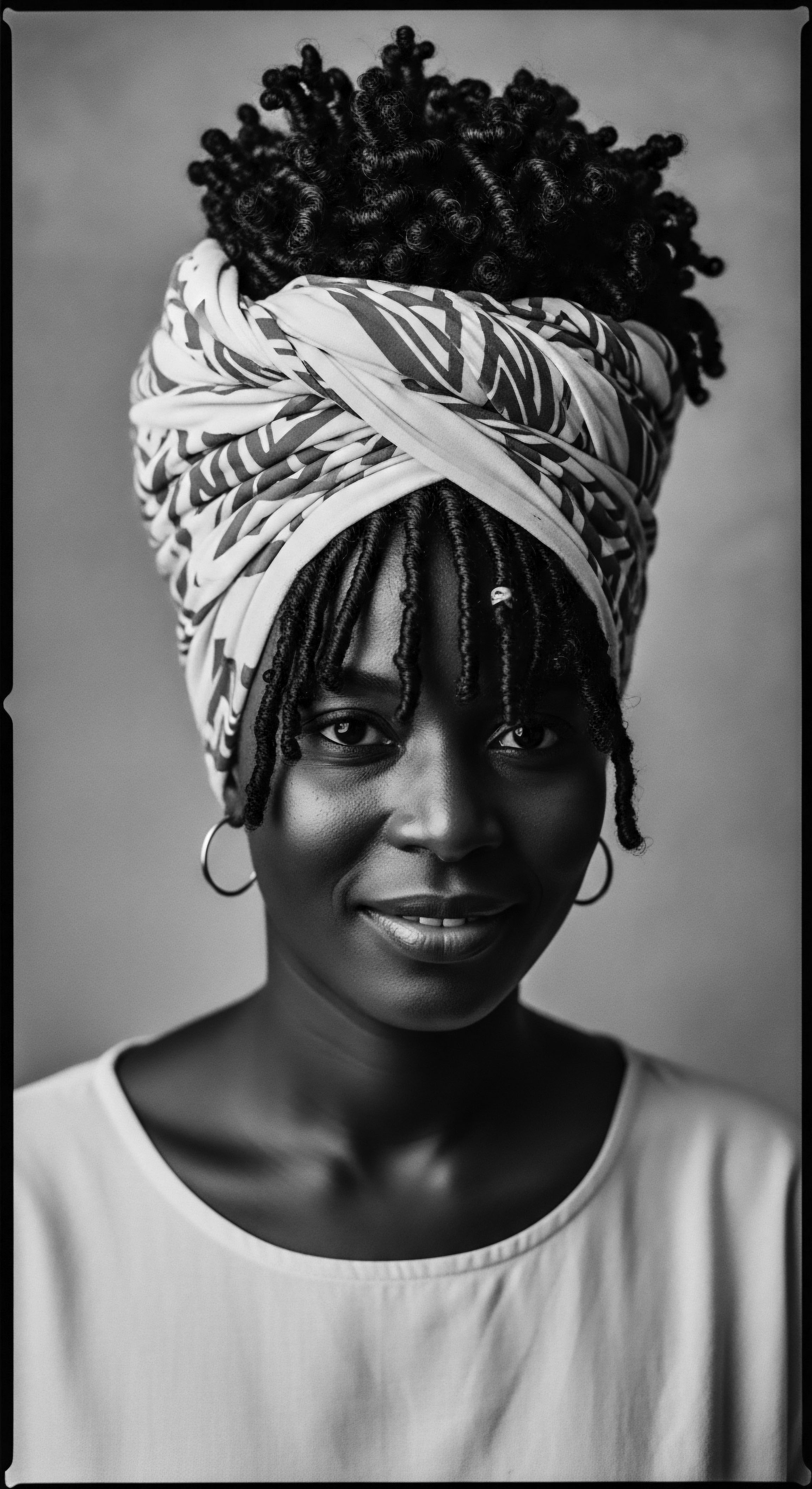
Interconnected Incidences and Deep Exploration through a Historical Case
The interconnectedness of personal empowerment with social justice and cultural preservation becomes strikingly clear when examining specific historical incidences. Consider the extraordinary resilience demonstrated by enslaved African women in parts of South America, particularly in 17th-century Colombia, where their hair became an elaborate system for covert communication and survival. Accounts from the maroon communities of Palenque de San Basilio, established by escaped Africans, describe how women would craft intricate cornrow patterns to serve as maps for escape routes. These were not simple decorative styles; they were precise, encoded diagrams of the surrounding landscape, indicating paths through mountains, the location of water sources, or even the presence of armed patrols.
A particular braid might symbolize a winding river, while a coiled knot could denote a mountain. This ingenious use of hair transforms it into a tangible tool for liberation, showcasing an unparalleled depth of personal and collective agency in the face of extreme adversity.
Further demonstrating this profound level of empowerment, oral traditions also convey that these enslaved women often braided rice, millet, or other seeds into their hair before fleeing plantations. This practice served a dual purpose ❉ it provided sustenance during their perilous journeys to freedom and, critically, allowed for the preservation of vital agricultural knowledge and the establishment of new foodways in free settlements. The conscious act of carrying the genetic material of their ancestral crops, intertwined with the very strands of their being, represents an exceptional degree of foresight and self-determination.
It speaks to a long-term vision of survival and cultural continuity, proving that personal empowerment can manifest not only in acts of immediate resistance but also in the meticulous planning for a liberated future. This instance powerfully demonstrates how the intrinsic significance of hair in pre-colonial African societies—as a carrier of identity, status, and spirituality—was transformed into a literal vehicle for physical and cultural survival in the diaspora.
This historical narrative provides a robust case study for understanding personal empowerment as a deeply embodied and communally informed process. It highlights how marginalized groups can subvert oppressive systems by leveraging cultural practices and innate intelligence. The “departes” hairstyle, and the practice of hiding seeds, are not merely anecdotes; they represent sophisticated acts of resistance, demanding collective trust, skilled execution, and profound psychological strength. The successful establishment of palenques, or maroon settlements, directly linked to these covert strategies, provides empirical evidence of the long-term consequences of such empowered actions.
The women who carried these maps and seeds were not simply escaping; they were actively creating new worlds, founding communities of freedom, and preserving a heritage against staggering odds. This exemplifies the definition of personal empowerment as a transformative force, capable of altering individual destinies and shaping collective futures.

Multicultural Aspects and Interconnected Incidences
The concept of personal empowerment, as seen through textured hair, extends across various communities within the African diaspora, each adding unique layers to its understanding. In Caribbean cultures, for instance, hair traditions often interweave with syncretic spiritual practices, where specific styles may hold protective or communicative properties, linking individuals to ancestral spirits or deities. The deliberate choice to wear one’s hair in styles that reflect these spiritual connections is a potent act of personal empowerment, grounding the individual in a sacred lineage and reinforcing a sense of spiritual agency. This highlights how empowerment can be deeply spiritual, manifesting through embodied practices that affirm one’s cosmic placement and inherited wisdom.
In African American communities, the mid-20th century Black Power movement propelled the Afro hairstyle into prominence, transforming it into a definitive symbol of political and personal empowerment. This style, which celebrated the natural volume and texture of Black hair, served as a defiant rejection of assimilationist pressures and a visible declaration of Black pride and solidarity. It was a clear statement that personal empowerment could be visually expressed, challenging prevailing societal beauty standards and asserting a distinct cultural identity. The widespread adoption of the Afro demonstrated how individual choices, when made collectively, could contribute to a powerful socio-political movement, illustrating a broader societal impact of personal empowerment.
- Psychological Autonomy ❉ The freedom to define one’s own beauty standards, unburdened by external, often discriminatory, pressures.
- Cultural Continuity ❉ The intentional preservation and reinterpretation of ancestral hair practices, bridging past and present.
- Social Agency ❉ The capacity to advocate for policies and societal shifts that recognize and protect diverse hair textures.
- Embodied Knowledge ❉ Understanding the unique biological properties of textured hair and developing care routines that honor its inherent structure.
Research in fields such as Africana Womanism and social work has begun to codify the therapeutic potential of hair care communities for Black women, recognizing them as informal helping networks where mental and spiritual wellbeing are nurtured. This academic lens frames hair salons and communal grooming sessions as vital spaces for storytelling, social bonding, and mutual affirmation, allowing individuals to process experiences of discrimination and cultivate resilience. The concept of “PsychoHairapy” illustrates this beautifully, aiming to integrate mental health support within traditional hair care settings, acknowledging the cultural significance of these spaces for holistic wellness. This demonstrates how personal empowerment is not solely an internal state but is often catalyzed and sustained through communal interaction and shared cultural practices.
The ongoing dialogue surrounding hair discrimination, leading to legislative efforts such as the CROWN Act, underscores the enduring relevance of personal empowerment in legal and political spheres. This sustained advocacy, driven by individuals and organizations, seeks to dismantle systemic barriers that have historically penalized natural hair. By challenging discriminatory policies in workplaces and schools, these efforts aim to ensure that personal expression through hair is protected, allowing individuals to move through the world authentically without fear of professional or social repercussions. This pursuit of equity and recognition solidifies the definition of personal empowerment as a continuous, active process of shaping a more just and inclusive societal landscape, building upon a legacy of resistance rooted in the very fibers of textured hair heritage.

Reflection on the Heritage of Personal Empowerment
The journey through the intricate definition of personal empowerment, as it intertwines with the heritage of textured hair, concludes not with a finality but with an ongoing invitation. It is a profound meditation on the enduring soul of each strand, echoing stories from forgotten hearths and vibrant contemporary communities alike. From the elemental biology that gifts textured hair its magnificent resilience, a biological marvel mirroring the spirit of a people, to the nuanced scientific understandings that now affirm what ancestral wisdom always knew, we perceive a continuous, unbroken lineage of strength and defiance. The practices of care, passed down through generations, are not simply routines; they are living archives, tender threads that bind us to those who came before, reminding us of the power inherent in self-possession and communal sustenance.
In the vibrant hues of this rich heritage, personal empowerment emerges as a dynamic force—a capacity to define one’s self, to resist erasure, and to sculpt a future rooted in authenticity. The example of enslaved women using their braids as clandestine maps and vessels for precious seeds is not merely a historical footnote; it is a foundational narrative, illuminating the boundless human spirit’s capacity for agency even under the most brutal conditions. It compels us to recognize that autonomy can be asserted in the most unexpected and intimate spaces. The choice to wear one’s hair naturally today, to celebrate its diverse forms, is a direct continuation of this ancestral spirit, a collective act of profound self-reclamation.
It speaks to an unbound helix, ever-coiling, ever-expanding, carrying forward a legacy of beauty, resilience, and unyielding freedom. This heritage, alive in every curl and coil, reminds us that the quest for personal empowerment is a timeless endeavor, a continuous blossoming that honors the past, enlivens the present, and shapes a liberated future.

References
- Ancient Origins. “African Slaves Used Braids to Communicate Escape Routes in Colombia.” Ancient Origins, 30 Nov. 2022.
- Afriklens. “African Hairstyles ❉ Cultural Significance and Legacy.” Afriklens, 1 Nov. 2024.
- BLAM UK CIC. “The History of Black Hair.” BLAM UK CIC, 15 Sep. 2022.
- Carney, Judith. “Subsistence farming of enslaved Africans creates African foodways in the New World.” UCLA International Institute, 20 Nov. 2024.
- Dornsife, USC. “Kinky, curly hair ❉ a tool of resistance across the African diaspora.” USC Dornsife News, 18 Oct. 2016.
- Mbilishaka, Thema. “PsychoHairapy ❉ Using Hair as an Entry Point into Black Women’s Spiritual and Mental Health.” ResearchGate, 2018.
- Shedavi. “History of Black Hair & It’s Hidden Symbolism.” Shedavi, 3 Feb. 2023.
- Smith Scholarworks. “Black women’s natural hair care communities ❉ social, political, and cultural implications.” Smith College School for Social Work, Ingrid Banks, 2000.
- The Garfield Messenger. “The Significance of Black Hair.” The Garfield Messenger, 28 Feb. 2022.
- Umthi. “The Cultural Significance and Representation of Afro-Textured Hair.” Umthi, 14 Sep. 2023.
